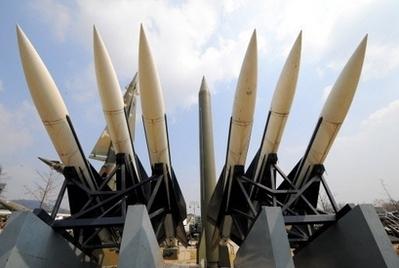Obama Makes Clear that Missile Shield is About Russia, not Iran

I have embraced the vision of John F. Kennedy and Ronald Reagan through a strategy that reverses the spread of these weapons, and seeks a world without them. To reduce our stockpiles and launchers, while ensuring our deterrent, the United States and Russia are completing negotiations on the farthest-reaching arms control treaty in nearly two decades.
With these words in his State of the Union Address, Obama last night made clear what the missile shield in Eastern Europe is really about. While the Bush administration claimed that the missile shield was about dealing with a threat from Iran, Obama has made it clear that it is about a threat from Russia, or at least a perceived threat. Having scrapped the plan for a missile shield in Eastern Europe last September, it is now back on the table with missiles set to be deployed in Poland as early as March or April of this year. The missiles will be within 35 miles of the Russian enclave of Kaliningrad, which makes clear that this is geographically about dealing with a perceived Russian threat to Eastern Europe, rather than an Iranian threat to the West. This is not about Iran, this is about Russia, and the Cold War lives on.
Obama draws on the Cold War legacy of two of his predecessors who had an impact on arms control, but also developed missile defence programmes. While we should not forget the progress made by Kennedy in the wake of the Cuban Missile Crisis after 1962 on arms control, or the agreements made by Reagan in the 1980s on arms control, we must remember that both of these men also implemented missile defence programmes to deal with a perceived threat from the Soviet Union.
The Kennedy administration had installed Jupiter missiles in Turkey as a deterrent to the Soviets, although they were forced to remove them following the Cuban Missile Crisis. Reagan famously developed Star Wars, and even if it foundered, that baton has been picked up in the more recent plans for a missile shield in Europe. Obama is developing the plans of the Kennedy and Reagan eras, and although he is trying to dress it up as following on from the discussions that were had with the Soviet Union during the Cold War, the deterrent aspect of his predecessors policies is also present. Obama is playing this down, understandably, but we would be naive to buy into the notion that his arms initiatives are purely about control through treaties, and that there is no nuclear deterrent being deployed. So too, we should not be fooled into thinking this is about Iran or North Korea.
While there may be an policy aspect concerned with deterring aggression from these states, Russia is the key to all of this. They are the named partner for the discussions in Obama’s speech, and it is them that the missile shield is primarily to deter.
Alastair Kocho-Williams earned his PhD in Russian History from the University of Manchester in 2006. He has taught History at the University of Leeds and the University of the West of England, where he is Senior Lecturer in International and Soviet History.

